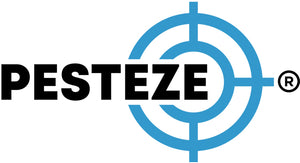HOW TO HANDLE AN INJURED BIRD

HOW TO HANDLE AN INJURED BIRD
SUMMARY
Finding an injured bird can be stressful, but knowing what to do can save its life. This guide explains safe, humane steps to help an injured bird while avoiding harm to yourself or the animal.
FEATURES
-
Assess from a distance: Observe the bird before approaching.
-
Protect yourself: Wear gloves to avoid bites, scratches, or disease.
-
Gently contain the bird: Use a ventilated box or towel.
-
Minimize stress: Keep the bird in a quiet, dark place.
-
Avoid giving food or water: Improper feeding can cause harm.
-
Contact professionals: Reach out to wildlife rehabilitators for help.
GUIDE DESCRIPTION
Encountering an injured bird is a situation that requires calm and careful action. Whether the bird collided with a window, was attacked by a predator, or appears weak, the key is to help without causing additional stress or harm.
The first step is to assess the situation from a distance. Watch the bird to determine if it is truly injured or simply stunned. Some birds, particularly after hitting windows, may recover on their own within a few minutes. If the bird is bleeding, unable to fly, or struggling to move, intervention is needed.
Always protect yourself before approaching. Birds may carry parasites or diseases, and even small species can bite or scratch if frightened. Wearing gloves provides both safety and reassurance.
When it is clear the bird needs assistance, carefully contain it. The best method is to gently cover the bird with a towel and place it into a ventilated cardboard box or pet carrier. Ensure the box has small air holes but remains dark inside, as this reduces stress.
Once contained, minimize stress by keeping the bird in a quiet, warm, and dark location. Avoid handling or disturbing it unnecessarily. Do not attempt to show the bird to others or keep it as a pet—this delays proper care and may worsen injuries.
It’s important to avoid giving food or water. Many people assume feeding is helpful, but birds have very specific diets, and improper feeding can lead to choking or further injury.
Instead, the most effective step is to contact a licensed wildlife rehabilitator or veterinarian. These professionals have the expertise to provide medical treatment and determine if the bird can be released back into the wild. If you’re unsure where to find help, local animal control, wildlife centers, or veterinary clinics can direct you.
By following these humane steps, you can give an injured bird the best chance of recovery while ensuring your safety and respecting wildlife laws.
- Saneeth Thota


Comments 0